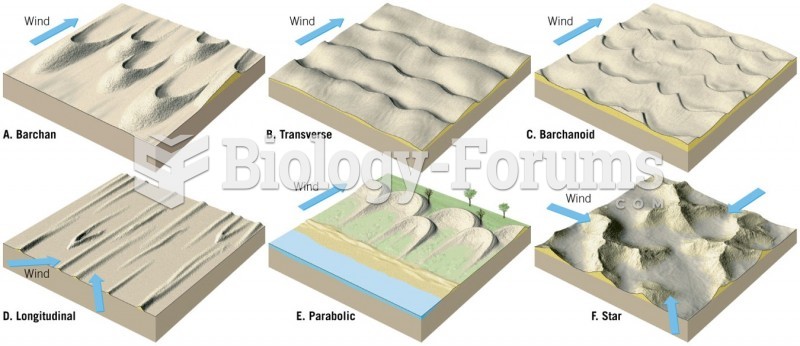|
|
|
Sildenafil (Viagra®) has two actions that may be of consequence in patients with heart disease. It can lower the blood pressure, and it can interact with nitrates. It should never be used in patients who are taking nitrates.
There are 60,000 miles of blood vessels in every adult human.
The Babylonians wrote numbers in a system that used 60 as the base value rather than the number 10. They did not have a symbol for "zero."
Most childhood vaccines are 90–99% effective in preventing disease. Side effects are rarely serious.
Signs and symptoms that may signify an eye tumor include general blurred vision, bulging eye(s), double vision, a sensation of a foreign body in the eye(s), iris defects, limited ability to move the eyelid(s), limited ability to move the eye(s), pain or discomfort in or around the eyes or eyelids, red or pink eyes, white or cloud spots on the eye(s), colored spots on the eyelid(s), swelling around the eyes, swollen eyelid(s), and general vision loss.
 Structure of a Triglyceride A triglyceride consists of three fatty acids attached to a glycerol back
Structure of a Triglyceride A triglyceride consists of three fatty acids attached to a glycerol back
 The eukaryotic cell cycle consists of two parts: (1) interphase and (2) mitosis followed by cytokine
The eukaryotic cell cycle consists of two parts: (1) interphase and (2) mitosis followed by cytokine





